QuestionHi, I recently started a roughly 35 gallon tank. I plan on moving my fish from there 10-15 gallon tank to the new one. The new tank has all new stones and all new water. Roughly how long should i wait until I can move my fish and get new ones. Also I was wondering if putting a bunch of ghost shrimp would more quickly ready my tank for fish. Lastly have you ever had a German Blue Ram fish if so do you think that 2 would live in a tank with a discus and would be able to live in a ph of 7.0 plus (strangely my ph gos higher then 7 i think its because of the decorations i put)and would a discus live with a pigmy puffer and fire bellied newt? I hope that you can help me out.
AnswerHi Lou;
Since the tank is new you will have to start out with just a few small fish and don't add more until the 6 to 8 week break-in period is over. You can put them in right away once water conditioner is added. Float them in plastic bags for 10 minutes like you would if you brought them home from the fish store. I don't know what you have in the 10 gallon, but add no more than a total of 4 or 5 inches of fish while the new tank breaks in for 6 to 8 weeks. It's hard to be patient but well worth it to save the lives of your fish. It wouldn't break-in any faster if you had ghost shrimp instead. Any live creature in there adds waste to the tank and the waste is what starts the process. Beneficial bacteria will develop that eats the waste and it just grows very slowly.
What does help the process go faster is the addition beneficial bacteria to the system. Don't waste money on products like "cycle" though. They truly do not work. The only one that does is called "Biospira". If your local fish store has it they will keep it in the refrigerator. That's why the other products don't do anything. They are kept on the shelf. The bacteria has to be kept preserved by refrigeration. Otherwise, the bacteria is dead.
Another couple of ways to add beneficial bacteria is by putting live plants into the new tank. They will already have some of the beneficial bacteria on them. Or, take some of the gravel from your old tank and put it in a nylon stocking. I use the knee-highs and just tie off the end. Rinse the stocking well before you fill it. and lay it on the gravel of the new tank. Bury it a little bit to give good contact with the new gravel. This is called "seeding". It doesn't matter if there is crud in the gravel when you take it from the other tank. This will help feed the bacteria while in the new tank. Add the 4 or 5 inches of fish right away and you are ready to wait for the break-in to go for 6 to 8 weeks.
Don't worry about the pH. It will stabilize on it's own as the tank ages and almost all the fish we keep these days are raised in a 7.0 or higher pH. They are bred and raised in concrete breeding ponds that are naturally higher in pH than most wild caught fish. Very, very few fish are wild caught anymore. That's why we now ignore what fish profile charts indicate a fish's pH should be. Our captive bred fish were never kept in that pH and since they can't read, they don't know what it's supposed to be anyway. ;-)
Even discus are usually not kept in a lower pH anymore. Unless they are breeders. Softer lower pH water encourages them to breed. However, experts are discovering now that they breed in harder and higher pH water anyway. Just don't worry about it. Trying to adjust the pH is a very tricky process which causes fluctuations that are much more harmful than leaving them in a pH that we don't think is "proper" for them. So, bottom line is don't worry about the pH. Partial water changes of 25% every week should keep all water quality issues under control as long as there is no overcrowding or overfeeding going on.
German Blue Rams are very nice little fish that could live with discus. They have been kind of delicate in recent years though. Make sure that the fish are actually eating before you buy them and that their bellies are not skinny. They have been known to carry internal parasites so the stressful process of moving them to the fish store from the wholesaler and the fish farm can cause them to become quite ill. Just have the fish store feed them in front of you. No eat, no buy. This is true with any new fish really. If they show no signs of appetite don't buy them. This is a serious symptom of serious stress and/or disease. If the fish store says they already fed them just wait a few hours and come back. If they don't want to feed them for you or get weird about it, find another store. They obviously don't know how important it is and they should be knowledgable enough to realize what you are trying to do.
Puffers must have a tank of their own. They will kill everything you have, even if they are dwarf or pygmy puffers. They look really cute and really sweet, but they have teeth and will take chunks out of your fishes' fins. I really like them too, but until I have space for a puffer-only tank they will have to stay at the fish store.
Newts are not a good animal to keep in an aquarium. I know you may see them in aquariums at the fish store but they are miserable there. Also, they are a cool temperature species and your discus will need high temperatures that will kill your newts. (Discus like 80f to 82f) Newts need a terrarium with some water but with a place to crawl out on shore too. They sleep and live mostly in swampy moist soil and vegetation when given a proper environment. They even like to curl up in a plant leaf and wait for live prey insects. They need live food and even eat fish. Even if they do decide to eat a dried food it really doesn't have what they need. The sad part is most newts taken home don't ever get offered live foods and slowly starve to death. Newts are really sweet and cute little creatures that need something different than just water to live in and dried food.
Here is my article on new tanks that will help you get your new tank started with a minimum of trouble;
**********
New Tank Syndrome or Break-in Period
So you have a new tank and you filled it up, put the filter together, mounted the heater into place and turned on the lights. You have all the plants and decorations where you want them....
You are ready for fish.
But, your filter is not ready for a full tank of fish yet.
The filter is running and moving the water and cleaning out crud, right? Of course!
But a very important part of your filter is the part you can't see. An aquarium filter removes the larger visible stuff, but it also must remove the dissolved fish waste that turns into ammonia in the water. To do this, special bacteria must grow in the filter system and on the particles of gravel in the bottom of your tank. This process occurs even on a limited scale in little fish bowls that have no filter in them.
This is "New-Tank Syndrome" or the "Break-in Period". The entire process takes 6 to 8 weeks to complete because these "nitrifying" bacteria grow quite slowly.
Start off with only one or two hardy fish (no more than 2 total inches of fish) for every ten gallons of water and don't add more until the 6 to 8 weeks has gone by. Hard to be patient, but it is worth it to keep your fish alive and healthy. As a matter of fact, the bacteria cannot develop without fish in the tank. You can let that tank sit forever without fish in it, but as soon as the first fish goes in the process begins. Avoid changing the filter pads during break-in. This removes the bacterial colonies that are essential to a balanced aquarium. You can rinse the filter pad out in a container of aquarium water. This will preserve most of the bacteria colonies while still allowing your filter to flow freely. Even using bacteria additives and water conditioners when you first set up the tank will not make a tank begin the cycle by itself. If there are no fish to provide food (fish waste) for the bacteria, the beneficial bacteria cultures will die and you will have to start the colonies all over again once fish are added to the tank. Once the tank has completed the initial cycle, you can change the filter pads every 4 weeks or so. But for now, just rinse them.
Feed your new fish VERY lightly. Any excess food will cause additional waste your system cannot afford to have right now. If you see food floating around or lying on the plants and gravel after five minutes, too much food is going into the tank. Cut back a little each time you feed until it is ALL gone 5 minutes after you feed them. Feed them once a day.
During this "break-in period" your tank will become cloudy and milky looking. You may have to tolerate this for the entire break-in period but it is only temporary. Changing 25% of the water three times a week until the break-in period is over helps a great deal. Changing water reduces the ammonia and nitrites that rise while the bacteria continues to multiply. If ammonia and/or nitrites become too high, your fish will become stressed and possibly die. Use a good water conditioner when you replace the water and make sure it is the right temperature to avoid shocking your fish.
When the break-in is over after 6 to 8 weeks and there are no nitrites or ammonia present in the water you can slowly add more fish. Add one or two every week until you reach the desired population. This allows the bacteria to adjust to the new population every time before adding more. Monitor the nitrites and ammonia to be sure they don't come up. If they do, make a 25% water change and check them again. Don't add the next fish until the levels are down again.
The safe maximum population for any size tank is one inch of adult fish for every gallon of water in the tank. Do some research to be sure of the fish you are interested in. Even though they are small when you buy them, you have to base your population calculations on full-sized adult fish. Many hobbyists have up to two inches per gallon but this can be risky. If a water quality issue arises or a disease occurs it will spread fast and furious in an over-populated tank. In any case, 25% water changes every week to two weeks are absolutely essential for the health of your fish.
Following these guidelines will help you get your new tank on the right track.
**********
At Your Service;
Chris Robbins
Come on over and join us on the freshwater fish forum at About.com to get even more information too;
http://freshaquarium.about.com/od/questionsanswers/a/naavigateforum.htm

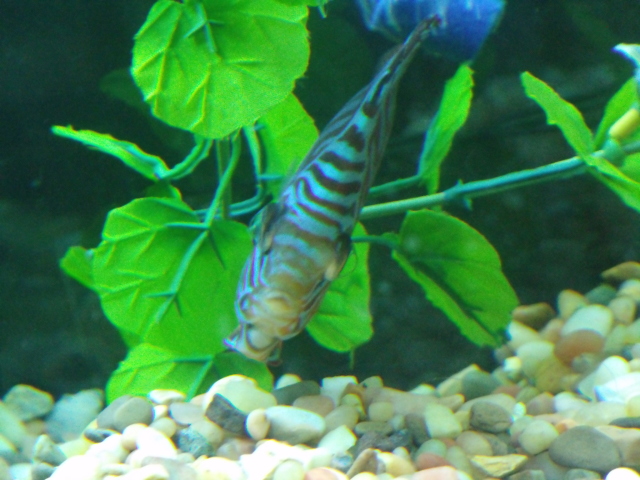 Discus with popeye not eating
Questionpopeye, possible hole
QUESTION: I was d
Discus with popeye not eating
Questionpopeye, possible hole
QUESTION: I was d
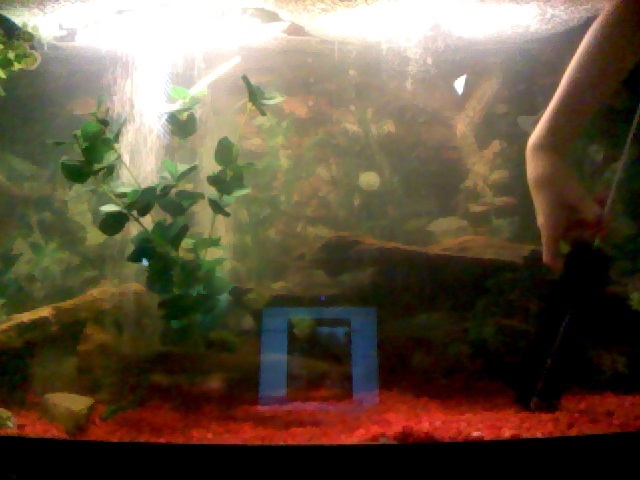 important please help
Question
catfish
hello I have a 12 inch yellow bullhead
important please help
Question
catfish
hello I have a 12 inch yellow bullhead
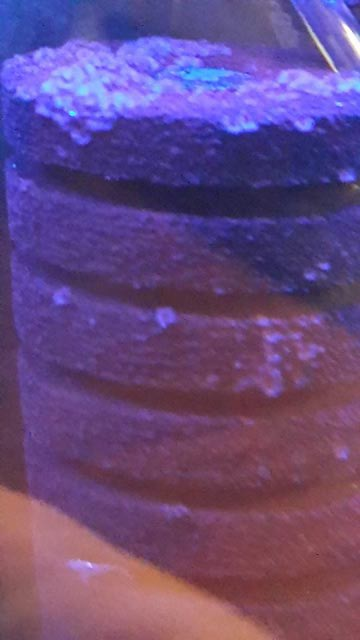 Pink fungus?
Question
pink fungus pink fungus
Hello,
I
Pink fungus?
Question
pink fungus pink fungus
Hello,
I
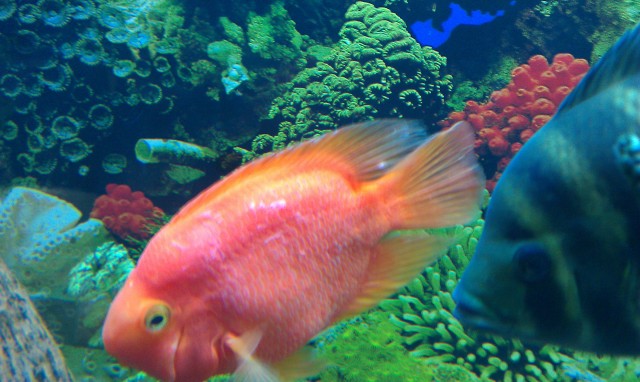 Parrot disease
Question
scales peeling off
I have a 115 gallon tank wi
Parrot disease
Question
scales peeling off
I have a 115 gallon tank wi
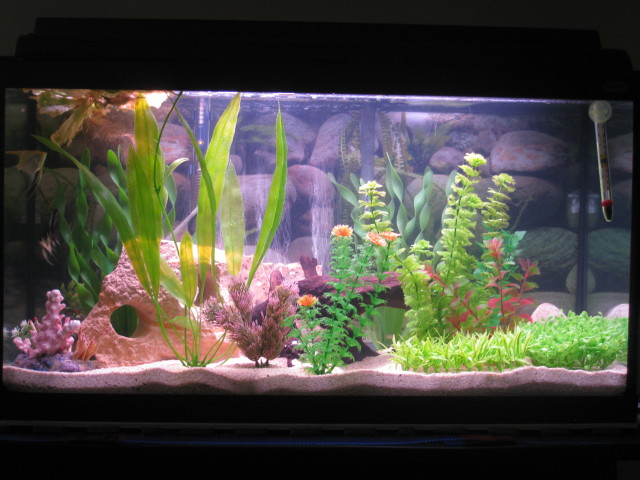 new aquarium
Question29 pic
QUESTION: does my aquarium look g
new aquarium
Question29 pic
QUESTION: does my aquarium look g